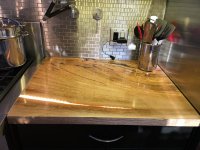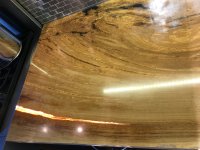Sanderxpander
Member
- Joined
- Sep 19, 2017
- Messages
- 419
Hi all,
I think I read some posts on this the other day but it was a kind of derail from another thread and I can't find it now. I have a Rotex 90 and would like to "freshen up" our acrylic dual bathroom sink thingy. We were a little careless with it during remodeling and there are some stains we can't get out and lots of tiny scratches. No major gauges thankfully. I am ever lost in the world of Festool abrasives, so far I've used the Rotex only on wood and paint so the grits I have are 40 through 220, all Granat. I'm assuming all of those would be too rough for this type of thing. So what would be a good place to start and how high should I go? This isn't a set of headlight covers so I guess it doesn't need to be an ultra high grit finish. I plan to use an interface pad to help with the curves, if that matters.
Do I use Platin? Brilliant? Do I need any kind of polishing compound/fluid?
I think I read some posts on this the other day but it was a kind of derail from another thread and I can't find it now. I have a Rotex 90 and would like to "freshen up" our acrylic dual bathroom sink thingy. We were a little careless with it during remodeling and there are some stains we can't get out and lots of tiny scratches. No major gauges thankfully. I am ever lost in the world of Festool abrasives, so far I've used the Rotex only on wood and paint so the grits I have are 40 through 220, all Granat. I'm assuming all of those would be too rough for this type of thing. So what would be a good place to start and how high should I go? This isn't a set of headlight covers so I guess it doesn't need to be an ultra high grit finish. I plan to use an interface pad to help with the curves, if that matters.
Do I use Platin? Brilliant? Do I need any kind of polishing compound/fluid?



